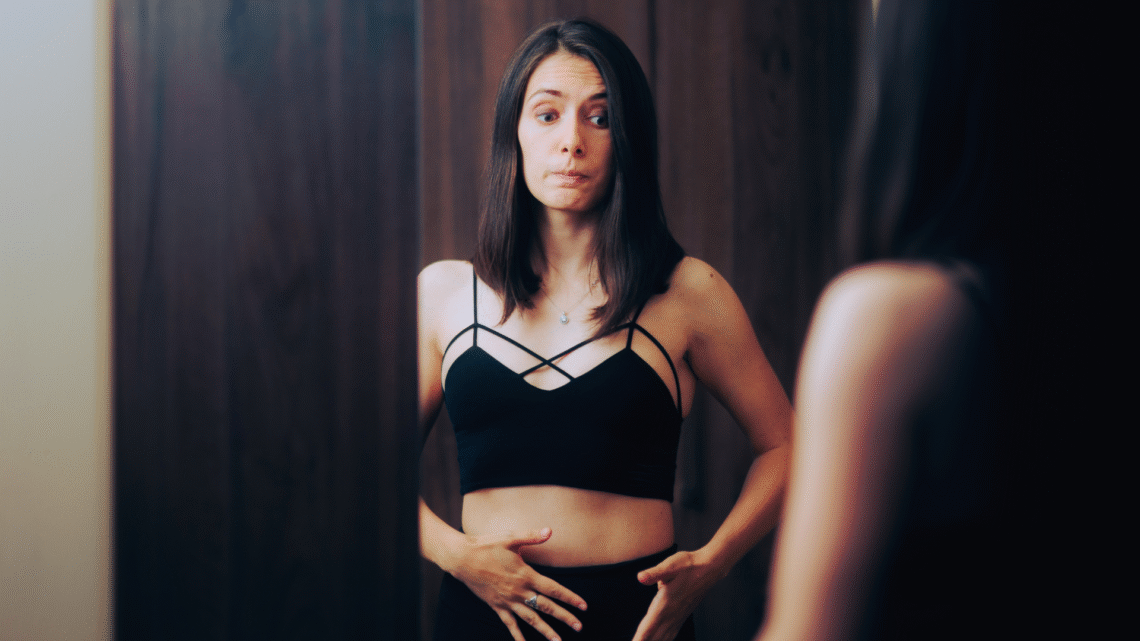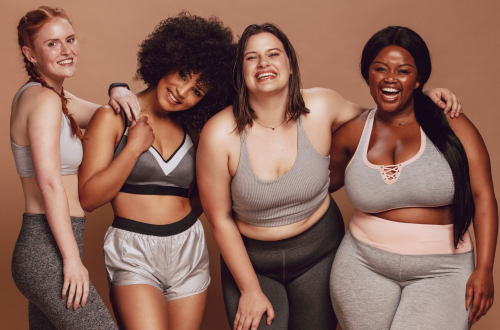
Tackling Body Shaming Through Fashion: Empowering Self-Expression and Confidence
Body shaming remains a pervasive issue, affecting individuals’ self-esteem and mental health. Fashion, often deemed superficial, can serve as a powerful tool to counteract these negative perceptions. By embracing diverse styles and body types, individuals can challenge societal norms and promote body positivity through their fashion choices.
In an age where self-expression is vital, fashion offers a unique outlet for combatting body shaming. Clothing choices can reflect personal identity, confidence, and resistance against unrealistic beauty standards. Those who choose inclusive brands or advocate for body diversity not only empower themselves but also inspire others to celebrate their uniqueness.
The journey towards tackling body shaming through fashion involves awareness, education, and community support. Understanding the influence of fashion on body image can encourage healthier conversations and foster a culture of acceptance. Each choice in attire becomes not just a personal statement but a collective movement toward positive change.
Understanding Body Shaming and Its Impacts
Body shaming involves criticizing or mocking an individual’s physical appearance, leading to negative effects on mental and emotional health. This section explores the definition of body shaming, its psychological repercussions, and the role social media plays in shaping body image perception.
Defining Body Shaming and Shame
Body shaming can manifest through comments, jokes, or even societal expectations that promote unrealistic beauty standards. It creates feelings of shame, which is an emotional response stemming from the perception of being judged negatively by others. Victims may internalize this shame, leading to a distorted self-image and affecting their confidence levels.
People often face body shaming based on weight, height, skin color, and other characteristics. This criticism can occur in various settings, including schools, workplaces, and online platforms. The impact is profound, as individuals may change their behavior or eating habits to conform to societal pressures, thereby perpetuating a cycle of body dissatisfaction.
It isn’t easy dealing with body issues when we are surrounded by those who have opinions. Any changes that an individual wants to make should stem from what they need, rather than what others say. They may decide to start a fitness regime, or checking out professionals on plasticsurgerysandiego.com, for instance. This isn’t bowing to peer pressure if they make a decision that benefits them, and comes from their own needs.
The Psychological Effects of Body Shaming
The psychological effects are severe and multifaceted. Victims of body shaming often experience anxiety, depression, and low self-esteem. These feelings can contribute to disordered eating behaviors, as individuals may seek to achieve an ideal body image through unhealthy practices.
Additionally, ongoing body shaming may lead to social withdrawal, as individuals feel unworthy of affection or attention. The fear of judgment can hinder personal and professional relationships, resulting in isolation. According to studies, the long-term impact of these negative experiences can result in chronic mental health issues.
It’s important to remember that while some people are able to brush off negative comments or social pressure, not everyone finds it that easy, and that’s completely okay. Everyone processes these experiences in their own way. And, for those who are struggling with body image and looking for a way to feel more at ease in their own skin, it’s perfectly valid to explore options like body contouring Chelmsford or other treatments available nearby.
At the heart of it, the focus should always be on what brings comfort and confidence, whether that comes from personal growth, therapy, or making a physical change. What truly matters is supporting people in doing what helps them feel whole, happy, and more like themselves, on their own terms and in their own time.
Social Media and Body Image Perception
Social media significantly influences body image perceptions today. Platforms like Instagram and TikTok often showcase images that adhere to narrow beauty standards, contributing to feelings of inadequacy among users. These platforms can amplify body shaming through comments and negative interactions.
Moreover, the quest for likes and validation can create unhealthy comparisons, where individuals judge their worth based on their appearance relative to curated digital images. This communal reinforcement of idealized beauty can exacerbate feelings of shame and impact overall mental health. Awareness of these dynamics is crucial for fostering a healthier relationship with one’s body.
In some cases, these pressures can even influence decisions around altering one’s appearance. Exploring options like the Best Plastic Surgery in Houston or elsewhere, may be part of how someone chooses to navigate their body image journey. However, it’s important that such choices come from a place of self-agency rather than societal expectation. Creating space for informed, confident decisions—whether related to appearance, health, or style—can empower individuals to reclaim their self-worth on their own terms.
The Role of Fashion in Shaping Body Image
Fashion plays a critical role in influencing body image perceptions and can either reinforce or challenge societal standards. By recognizing diverse body shapes and embracing inclusivity, the industry can empower individuals and foster confidence.
Fashion Industry Standards and Body Diversity
The fashion industry has long adhered to narrow beauty standards, often promoting specific body types over others. This emphasis can create unrealistic expectations for individuals, making them feel inadequate if they do not conform. Designers have historically favored models with slim waistlines, flat chests, and long legs, which can alienate a significant portion of the population.
In recent years, there has been a push for more body diversity on runways and in advertising. Brands are beginning to showcase a wider range of sizes and body shapes, acknowledging that beauty is not monolithic. This shift encourages individuals to embrace their uniqueness rather than aspire to an unattainable ideal.
Inclusive Fashion as an Antidote to Body Shaming
Inclusive fashion broadens the definition of beauty by catering to various body shapes, including those with fuller hips, larger breasts, or varying silhouettes. It empowers individuals by validating their experiences and promoting a positive self-image.
Many brands are now offering extended size ranges and creating clothing that flatters different body shapes. This strategy not only helps individuals find their perfect fit but also promotes self-confidence. As consumers see themselves represented in fashion, it reduces feelings of isolation and body shame.
Highlighting Unique Body Shapes
Shining a light on unique body shapes is essential for combating body shaming. The fashion industry can celebrate diverse body types by designing clothing that enhances particular features.
For instance, dresses that accentuate curves can make individuals feel more confident. Fashion campaigns that feature models with varying chest sizes and shapes normalize these differences, fostering acceptance.
Prominent brands are increasingly collaborating with body-positive influencers to spread this message. Such initiatives influence societal perceptions, promoting a healthier body image for all individuals by highlighting that every body shape can be stylish and beautiful.
Empowering Individuals Through Fashion Choices
Fashion plays a crucial role in building self-confidence and promoting acceptance of diverse body types. Through intentional clothing choices, individuals can embrace their uniqueness and make powerful statements about self-acceptance and personal style.
Promoting Self-Confidence with Personal Style
When individuals express their personal style through fashion, they often feel a boost in self-esteem. Choosing outfits that reflect one’s personality can significantly reshape how one sees themselves. For example, a bright color palette might invigorate someone, while a tailored outfit can emphasize their figure.
Clothes that fit well and resonate with personal taste generate a sense of pride. This pride can counteract the effects of body shaming. Now, this sense of confidence also comes from feeling like they’re in the best version of their body, where they feel aligned with their self-image.
For some, a Body Lift in Beverly Hills (or elsewhere) can be part of that process, as it can help restore a smoother shape and allow clothes to sit more comfortably and confidently. It’s one of many ways people choose to feel more at home in their bodies, especially after major physical changes. Visible confidence is often contagious, encouraging others to embrace their own style choices.
The Power of Revealing Clothes
Revealing clothes can serve as a powerful tool for self-expression. Individuals may choose to wear garments that highlight their bodies, challenging societal norms surrounding body image and modesty.
This choice can convey a strong message of body positivity. By proudly embracing their bodies, individuals can inspire others to do the same. For some, revealing clothes become a declaration of freedom and confidence.
Moreover, when wearing such styles, individuals can shift their perspective from insecurities to empowerment. It encourages embracing imperfections and celebrating uniqueness.
Fashion as a Form of Self-Expression and Acceptance
Fashion acts as a canvas for self-expression and promotes acceptance of diverse body types. Through fashion choices, individuals communicate their identities and values to the world.
The intersection of style and self-acceptance fosters a community that uplifts rather than shames. Individuals can find solidarity in shared experiences and fashion choices, decreasing the stigma associated with body diversity.
Additionally, participating in inclusive fashion movements can further enhance acceptance. By supporting brands that promote body diversity, individuals challenge industry standards that often perpetuate body shaming. This creates a collective mindset focused on embracing all body types.



